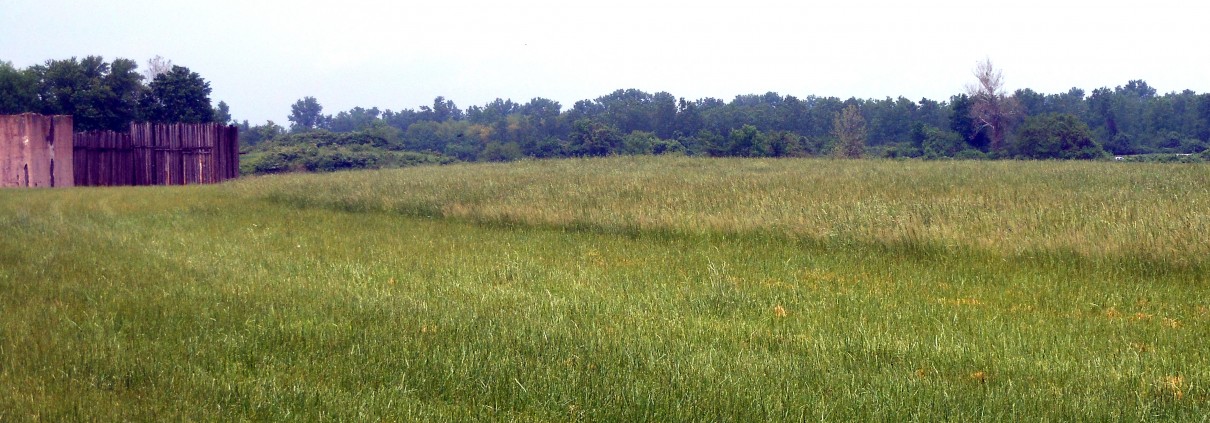Mound 18
Just northwest of Patrick’s Mound 35 is what appears to be a small, round mound with a flat top, Mound 18. Mound 18 is indicated on the UVVM Map as a lobe in a contour line, and it has the appearance today of a low dome approximately 1 meter (3.3 feet) high. The change in appearance since Patrick’s time is undoubtedly due to cultivation over the last one hundred years. Earlier maps estimate Mound 18’s height as from 6 to 10 feet (1.85 to 3.05 meters), the McAdams and Thomas maps both give a height of 10 feet (3.05 meters). Early maps do not agree on the location of the mound. However, the Patrick Map was more carefully surveyed than either the Thomas or Peterson-McAdams maps, and the location indicated by Patrick corresponds more closely to contemporary aerial photos and contour data.
Early excavations were conducted in the vicinity of Mound 18 and the mounds that form a line heading east *from it, Mounds 19 to 26. Stephen Peet made the following reference in The American Antiguarian:
Mr. Ramey, the owner of the mound, speaks about digging in one part of the field and finding heaps of bones eight feet deep, and says that the bones are everywhere present. The workmen who were engaged in digging ditches for under draining had a few days before they came upon large quantities of pottery and skeletons of large size, but had carelessly broken them instead of preserving them. As to the character of the pottery and the patterns contained in them, we noticed some remarkable resemblance’s between the pieces exhumed here and those which are found in the stone graves of Tennessee. One specimen was especially interesting. It represented a squirrel holding in its paws a stick, the teeth placed around the stick as if gnawing it, the whole making a handle to the vessel. We noticed also a frog shaped pipe made from sandstone and many other animal-shaped and bird-shaped forms. The object which impressed us most was a sandstone tablet, which contained figures very much like those found upon the inscribed tablets taken from one of the mounds of the Etowah Group in Georgia. [Peet 1891: 9-10]






